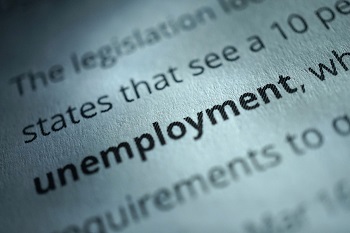COVID-19 and Unemployment Insurance: What's New in Washington
By Amy Kangas Alexander | Related Practice: Employment
Category: Covid-19
Unemployment applications are skyrocketing and both our state and federal governments are responding quickly. As an employer, worker, or friend, here is what you need to know about the changes in Washington’s unemployment insurance (UI) program.

This article is current as of April 1, 2020. We will update this post as rules continue to change. Current information is also available from the Employment Security Department (ESD) at https://esd.wa.gov/newsroom/covid-19
- Standby extended to 12 weeks. Employees who are laid off temporarily can now qualify for unemployment in a standby status for 12 weeks. Previously, standby was available for only four weeks. On standby, employees do not have to search for work in order to receive UI benefits. With job search requirements waived for all (discussed below), employees will see little difference in a standby classification. Employers may benefit from standby by having a pool of employees to return to work, and applying to reduce unemployment premiums by re-hiring standby workers (see below). Employers who need to have employees on standby for longer than 12 weeks can apply to ESD for an extension.
- Standby expanded for part-time workers. Standby is newly available to employees whose part-time hours have been temporarily eliminated.
- Medical benefits for standby workers. Under existing rules, employers may continue an employee’s medical coverage while that employee is on standby without compromising eligibility for UI benefits. Employees should not be required to report or deduct any employer-paid premiums from UI benefits. But if employers pay employees directly while on standby and continue medical benefits, those payments may be deductible from UI benefits.
- No job search requirements. All recipients of unemployment compensation are temporarily excused from job search requirements, which mandated applying to a certain number of jobs (or demonstrating similar efforts) each week. People receiving unemployment must still be available to work.
- Unemployment for gig and self-employed workers. A self-employed person who is unemployed or cannot reach work for a COVID-19-related reason is now eligible for unemployment compensation. This expansion comes from the federal CARES Act, but will be implemented by Washington’s ESD.
- Unemployment for people without substantial work history. Historically, people must work a certain amount in the last year to qualify for unemployment. The CARES Act will expand unemployment to people who would not otherwise qualify based on work history. The parameters of this expansion are not yet defined. We expect updates from ESD and the U.S. Department of Labor.
- Extended benefits. Under the federal CARES Act, benefits will be extended by 13 weeks for all people who receive unemployment. In Washington, this means benefits will last for a maximum of 39 weeks.
- Additional $600 added to weekly unemployment compensation. Under the federal CARES Act, an additional $600 will be added to each person’s weekly unemployment compensation until July 31, 2020. This amount is not pro-rated in any way, even for people receiving unemployment while working part-time. No matter the amount of an individual’s UI benefit, $600 will be added. This additional amount will not be counted towards the recipient’s income to determine eligibility for Medicaid or CHIP (Children’s Medicaid).
- Employers can apply to mitigate the effect of furloughs on unemployment premiums. Employers who temporarily lay off workers due to COVID-19 may be able to avoid substantial increases in their unemployment insurance taxes. Typically, the amount paid to a laid off worker is charged to the employer through the employer’s experience rating. Over time, or in the case of large-scale layoffs, an employer will pay a higher percentage of unemployment payroll taxes. Under Engrossed House Bill 2965, an employer may apply to avoid having a portion of these amounts charged to their experience rating. To qualify, the employee must be temporarily laid off due to COVID-19, approved for standby, and rehired to the same job. The Department has not yet written rules for this program, but applications are due by September 30, 2020.
If you are an employer or employee and have questions about the changing landscape of unemployment compensation, please contact an attorney in our Employment Group.
